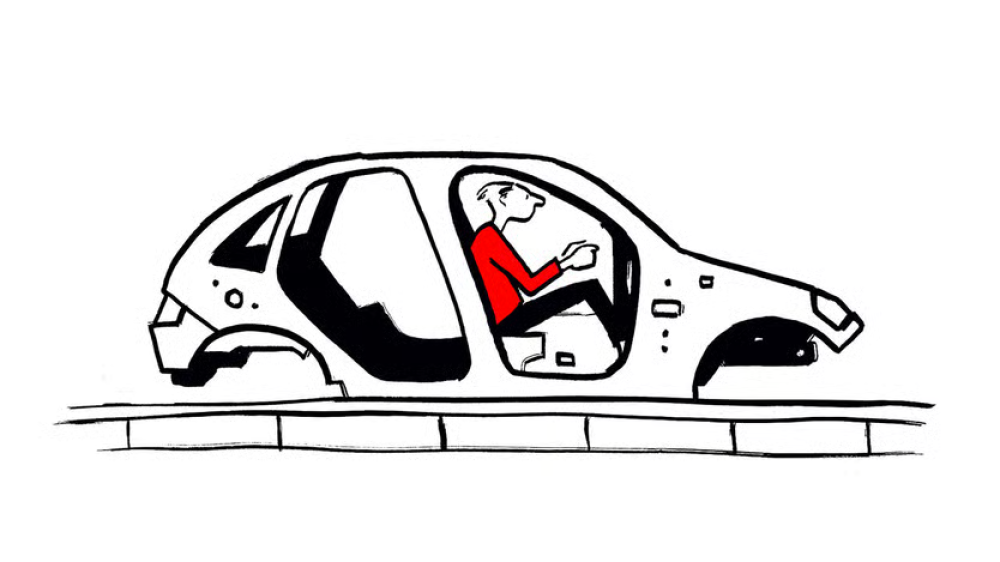Making things is important
The world must escape “The manufacturing delusion” (June 14th), you say. Yet
manufacturing remains a core driver of economic growth and high-quality jobs. Yes, manufacturing is becoming more automated, but this transformation has not diminished its importance. On the contrary, modern manufacturing drives productivity, innovation, exports and the development of complex supply chains. Factory jobs also tend to be higher value, supporting surrounding ecosystems through design, engineering and services. In Britain a lost manufacturing job often means the loss of a high-wage job outside London. Manufacturing in Britain accounts for the largest share of business
R&D investment, boasts the second-fastest productivity growth among industries (3% a year from 2000–23), and remains a leading contributor to capital formation.
It is also a logical flaw to suggest that China’s growth slowdown comes from an over-reliance on manufacturing. The real factors behind its slower growth are a weaker global economy and China’s transition to a more mature development stage. In fact, China’s economic strategy is increasingly centred on spurring “new quality productive forces” through advanced manufacturing, precisely because manufacturing remains vital to innovation and long-term growth. Rather than retreating from manufacturing, China is doubling down on it as the cornerstone of its “high-quality development” agenda.
Showcasing India as an example of where economies can thrive while sidestepping manufacturing is an exercise in cherry-picking that contradicts the lessons of every other industrialised economy. Indian leaders themselves are more cautious. Manmohan Singh, the late former prime minister, noted that “A substantial manufacturing base is essential to absorb the workforce and ensure sustainable growth.”
Deindustrialisation is not a strategy, it is a surrender.
Dr Mateus Labrunie
Dr Carlos Lopez-Gomez
Professor Tim Minshall
Institute for Manufacturing
University of Cambridge
You see the retreat of industry in rich economies as a benign, inevitable drift toward services. On the ground it looks rather less idyllic. The real delusion is the belief that advanced societies can live off spreadsheets while their physical base erodes. Service innovation is welcome, but someone still has to pour the concrete and draw the wire. Better to recognise that reality now than relearn it in a hot war or a cold winter. Take Ukraine, for example. Western governments discovered that “just-in-time” re-armament is a mirage. After 18 months of emergency spending the European Union and the United States can finally muster roughly 1m 155mm shells a year. Russian factories were on course for 4-5m in 2024. If that is “remarkably fast” adaptation, one shudders to imagine slow.
Moreover, the notion that manufacturing is now a laggard is out of date. The OECD’s compendium of productivity indicators for 2023 shows manufacturing multifactor-productivity still advancing roughly twice as quickly as market services in the median G7 economy. Deindustrial economies are not more efficient. They are merely importing other people’s efficiency and exporting their own purchasing power.
The lesson is not to seal borders behind tariff walls—Donald Trump’s metals duties in 2018 proved how self-harming that can be—but to run an active, open industrial strategy. Permit planning that allows large plants to be built in years, not decades; use public co-investment where spill-overs are obvious, such as power semiconductors; use trade among allies so that capacity is pooled rather than duplicated.
Dr Wladimir Kraus
London
Manufacturing is not just about jobs, it is a crucial engine for innovation, especially in high-tech sectors. For instance, in space and aeronautics the success of programmes such as Artemis or Ariane hinges on robust, homegrown manufacturing capabilities. Similarly, the energy transition requires the ability to manufacture wind turbines and grid infrastructure domestically to avoid supply-chain disruptions. The pandemic and recent geopolitical tensions have shown that an over-reliance on foreign manufacturing can jeopardise national interests. Countries need to invest in domestic production lines for defence, satellites, and clean-energy hardware to ensure readiness and resilience.
I agree that blanket subsidies are not the answer, but targeted support for these strategic sectors, such as through workforce development, incentives for critical component production, and public-private collaboration, can help maintain a competitive edge without resorting to protectionism.
Adrian Garcia Aranyos
President
Thune Eureka
Vilagarcia, Spain
Target the demand for drugs
Strengthening
anti-drug law enforcement in Ecuador is good advice (“Busting gangs, keeping the law”, June 14th). But the suggestion that legalising drugs (which you admit won’t happen) would weaken drug gangs is a fool’s errand. This is seen in America, which has in effect legalised cannabis over three decades. The legal cannabis industry has not ended illegal cannabis supply in California. Only 40% of the cannabis bought in California comes from legal suppliers and legal sellers urgently call for more law enforcement to curb their vigorous illegal competitors. The best way to weaken drug gangs is to reduce the demand for drugs. As long as people are willing to pay for drugs, drug-trafficking organisations will continue to thrive and supply them.
Dr Robert DuPont
Former White House drug czar
Chevy Chase, Maryland
Tell them I’m going fishing
I was a photographer at the
Houston Chronicle when
“Jaws” opened in 1975 (Back Story, June 14th). There were often long lines at the movie theatres, so long that I was assigned to take a picture of them. At one theatre in the Galleria shopping centre the line extended some 400 feet (120 metres). As a testimony to the movie’s popularity, one of those patiently waiting to buy a ticket was a man with a white cane.
Bill Clough
Victoria, Texas
Muscular Christianity
You identified
covid-19 as a catalyst for renewed faith among Generation Z (“Not losing my religion”, June 14th). Another crucial factor is social media’s role in normalising Christianity for the young. TikTok and Instagram have become unexpected evangelising platforms, where fitness influencers and “bro-coded” content creators increasingly weave Christian messaging into their posts. These figures, often young and athletic men, present faith as compatible with modern masculinity, countering traditional perceptions of Christianity as feminine or outdated. This digital evangelism helps explain why young men are becoming “particularly keen on God”. Algorithms amplify religious content to users who show interest in self-improvement, mental health, or community. Social platforms have transformed religious discourse from institutional to personal, from formal to accessible.
Chase Schaub
Boston
“Baptism boom” (May 31st) reported on
the rise of adult baptisms in France. I noted your suggestion that covid-19 may be one explanation for this trend, and that “an excessive time spent on screens and working from home” may be another. In America an article written by Alec Tyson, Michael Lipka and Claudia Deane in February this year for the Pew Research Centre offers an extensive insight into how the pandemic affected religious life in this country.
As an educator I can honestly say that post-covid-19 students are less engaged and more withdrawn. The question remains to be seen whether they can play catch-up on their human capital, or will the pandemic forever be their Achilles’ heel?
Edward Lamb
Texarkana, Texas
Talking punctuation
Inverted commas to indicate dialogue in writing are falling out of fashion, you report (“Inverted snobbery”, June 14th). Samuel Beckett’s trilogy in the early 1950s ignored inverted commas altogether. Beckett’s hostility to the conventional novel was almost certainly behind his decision. The effect is a unity with the narrator, but which may not work well, or even clearly, with other styles of writing. James Joyce dropped inverted commas in “Ulysses”, but this was published under different circumstances. He was subject to French printers whose conventions determined the result, and in the bargain, they made errors in the text.
Guy Cranswick
Sydney
When Joyce wrote a passage of “Ulysses” without any punctuation he was praised as a literary hero. When I wrote an essay without any punctuation all I got was “1/10, See Me”. Joyce’s pernicious influence on writing needs to be expunged, so that we can rightfully consign to the dustbin the most ludicrously overrated author in the English language.
Robert Frazer
Salford
Inverted commas may be creatures of fashion but from our furry ancestors onwards, vocal speech between real people has been augmented by gestures. Think of those punctuation marks as signals from author to reader and their importance becomes clearer.
Unlike the novels cited, when it comes to the encyclopedias of knowledge on which we rely for our understanding of the world, these quotation marks retain their central place in distinguishing between the view of the author and that of someone being cited. In a world where truth is at risk, careful use of the old inverted comma will continue to have its place.
Peter Tompkins
Vice-chairman
King’s English Society
London
It was with what I now take to be the predictable horror of the over-educated that I read your piece on the decline of the inverted comma. Yet something intrigues me. How do we explain the inverse correlation between said decline and the inexorable rise in people using the “air quotes” gesture in conversation, a polite two-fingered movement that incarnates the textual symbol. If you are right, presumably, and perhaps ironically, our ancestors will one day wonder quite where that gesture came from in the first place.
Tim Bale
Professor of politics
Queen Mary University of London
You say that quotation marks are “inaudible and unpronounceable”. Not so. The great Victor Borge resolved that issue with his invention of phonetic punctuation. Readers will have to search out his actual presentation to get the full flavour, but suffice it to say that inverted commas can easily be indicated with a kind of double-clicking sound (upward inflected to open and downward to close, of course).
Jack Stevens
Brookline, Massachusetts
The most accurate term for inverted commas isn’t perverted commas by James Joyce but rather (“)air bunnies(”) by Gloria Delgado-Pritchett in “Modern Family”.
Michael Rurik Halaby
London
FORGETINVERTEDCOMMASWESHOULDRETURNTOTHEANCIENTGREEKWAYSANDWRITEINALLCAPITALLETTERSWITHNOPUNCTUATIONWHATSOEVER
David Opderbeck
Professor
Seton Hall University School of Law
Newark, New Jersey




